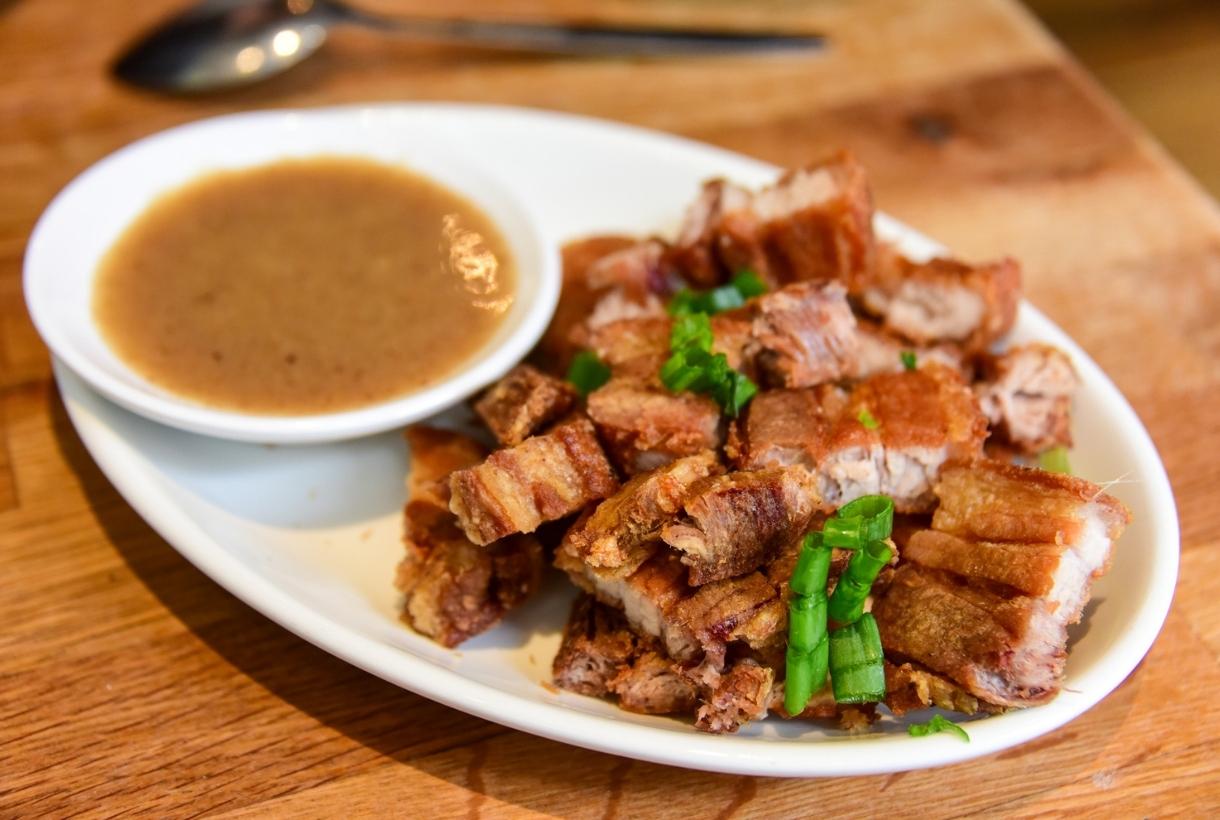
Filipino cuisine has been shaped by centuries of Chinese, Malaysian, Spanish, Indian, and Western influences. As a small South-Eastern country compromised of approximately 7,600 islands and with eight different major dialects, Filipino food is as diverse as its geography, history and culture. Despite each province’s distinct cooking preferences, there’s one particular dish that’s almost always the centre of every special celebration: Lechon.
Related: 10 Popular Filipino Recipes, From Chicken Adobo to Halo-Halo

Lechon is a whole roasted young suckling pig known for its juicy and fatty meat and irresistibly crispy skin, Chef Kuya P, the head chef at Toronto-based Filipino restaurant Lamesa, explains.
From Christmas to graduations and weddings, the difference between a get-together and a party is whether or not Lechon will be served as the main dish.
“In the Philippines, every region has their method of cooking lechon. Some people would even fly out Lechons from different regions of the country for big celebrations like their wedding just because they like that particular type of Lechon style so much,” says Chef Kuya P.
In other words, Filipinos are as passionate about Lechon as Italians are passionate about pasta.
Due to the size of a whole Lechon, many people opt for Lechon kawali. Lechon kawali is a crispy deep-fried pork belly made in a pan for a more accessible way to enjoy everyone’s favourite special Filipino dish. Here are five simple tips for cooking the best Lechon kawali:
Choose the Perfect Cut of Pork Belly
The most important part of cooking Lechon kawali is the cut of your pork belly.
“Make sure you have a good fat to meat ratio,” Chef Kuya P explains. Pork belly is a boneless cut of meat and is topped with a thick layer of fat. If you’re making Lechon kawali, you’ll want to find a cut that’s at least 20 to 30 per cent fat. The higher the fat content, the longer it takes to render, but that melt-in-your-mouth tenderness will always be worth the wait.
Add in Your Aromatics While Brine Boiling
Boiling your cut of pork belly until tender is an essential part of making your Lechon kawali as juicy as can be. Infuse flavour into your Lechon kawali and create a bine boil by turning to classic aromatics found in Filipino cuisine, such as garlic, bay leaf, chilis and peppercorn, Chef Kuya P recommends. Doing this step is an easy way to enrich the dish, and this step will ensure that your Lechon kawali will retain moisture during the frying process.
Related: How to Make Vietnamese Bun Cha

Thoroughly Dry Your Pork Before Frying
After your pork belly is cooked, drain the brine and add some salt and vinegar to the cut of meat. This step helps the pork belly dry out thoroughly while still retaining moisture, Chef Kuya P explains. Let it sit at room temperature for a minimum of two to three hours until the pork belly has dried completely.
You Might Also Like: Restaurant-Worthy Chinese Scallion Pancakes

Use The Right Equipment
Once the pork belly is thoroughly dried, it’s time to start frying. Divide your pork belly into batches and fry pork in the hot oil for approximately 3 to 5 minutes until the pork belly is golden brown and the skin is crispy. We recommend using a deep non-stick frying pan and only covering the pan partially while cooking. Additionally, don’t skip out on using a grease splatter screen while making Lechon kawali.
Don’t Forget the Lechon Sauce
Lechon kawali isn’t the same without a side of Lechon sauce. “Lechon sauce is a liver sauce made with breadcrumbs that’s sweet, acidic, and garlicky,” Chef Kuya P explains. Although there are many different ways to make Lechon Sauce, most Filipinos prefer using a bottle of Mang Tomas All Purpose Sauce instead.
Similar to how you might think of Heinz when you think of ketchup, the particular taste of Mang Tomas All Purpose Sauce is a fan-favourite for Lechon sauce. “Everyone who knows lechon sauce knows this brand, and if they ask for it, they will ask for it by the brand name Mang Tomas,” he explains. You can purchase Mang Tomas All Purpose sauce at your local Asian grocery retailer.
Looking for a healthy side for your hearty Lechon kawali? Try serving it alongside this silky, tender Chinese eggplant.
Photos courtesy of Getty Images.

